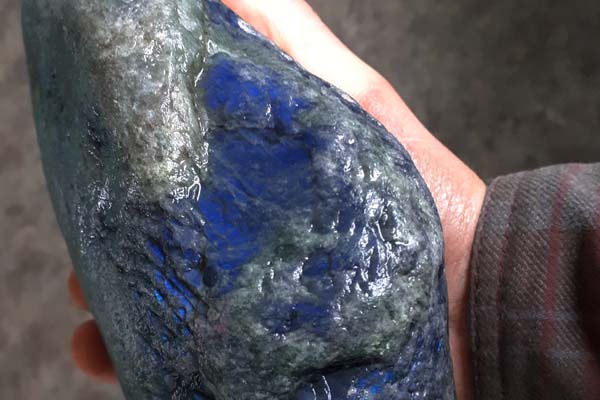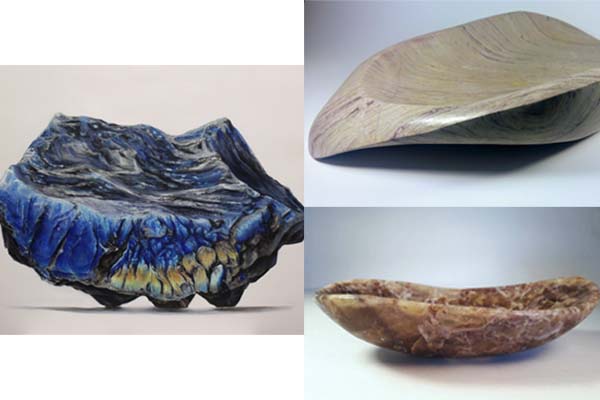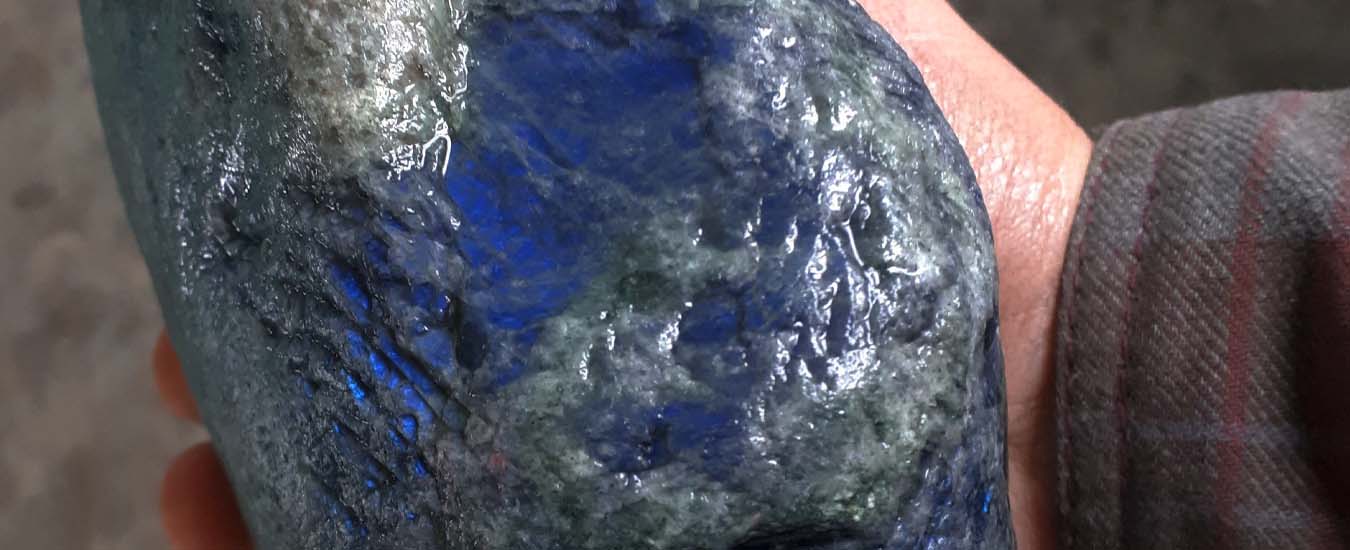A Newfoundland stone carver stakes his claim
“Every block of stone has a statue inside it, and it is the task of the sculptor to discover it.” –Michelangelo
When Kyle Bennett of Island Stone Designs in Branch, NL, heads out for a hike, he gears up with a rucksack capable of carrying 60 lbs, a prospecting hammer and a 10-lb sledgehammer. It’s not a walk in the park for the artist who is out prospecting for Newfoundland’s most precious minerals, but it’s the part of his craft that the 33-year-old stone carver from St. John’s believes brings him the most satisfaction.
Sometimes several kilometers from his vehicle, Kyle will lug pieces of igneous rock that he breaks from large boulders and outcroppings that are part of the millions of years old geological formations that became the east coast of Canada. After prospecting for the past four years, he knows what to look for when scouting for signs of minerals that will find a new form and function with a gentler hand back in his studio than the one that wielded the sledgehammer in the wild.

The art of the prospector
Said to be one of the oldest 3D art forms, stone carving is in part science. Carvers need to understand the materials they are working with as no one stone reacts the same way. When Kyle decided to return to stone carving several years after his first introduction to the craft when he was studying art at the Grenfell Campus of Memorial University in Corner Brook, he was intrigued with the idea of becoming a certified prospector. A two-week intensive course at the College of the North Atlantic introduced the young artist to the basics of geology and a solid understanding of the practical side of the science, where he learned what to look for in the field.
“I think the most interesting stones are found along the west coast,” says Kyle, who has discovered his own special places in this region to hunt for peridotite, fluorite, virginite, red jasper, amethyst and the province’s most popular mineral, labradorite, known for its luminous blue-green sheen. Folklore has it that a hunter threw his spear at a stone containing labradorite, releasing the Northern Lights to the sky. The light that remained in the stone is the colourful deposit that Kyle carves and polishes into objects and jewellery. The stone is also one of the more difficult to carve, rating high (6-6.5) on the Mohs scale of mineral hardness.
Kyle likes to keep the locations of his labradorite under wraps. “Most prospectors are looking for gold and stake claims, but I still like to keep most of my locations secret. It’s just one of those things,” he says.
A varied path
Kyle didn’t take a straight path to stone carving. After graduating from art school, he travelled and surfed in other parts of the world. It was during this time that he became fascinated with carved stone sinks, which perhaps created the foundation for other things in his future. There was a short stint working construction—where he quickly realized that type of work was not for him.
Returning to artistic pursuits, he started carving wood burls, the big knotty bulges found on tree trunks. He was carving burls into bowls when he thought more about his first introduction to stone carving and sculpture as a student. “This is when I really decided to learn more about stone and geology,” explains Kyle.
Fluorite is perhaps the most precious of the minerals that Kyle works with. Its purple, orange and green colours are sought after but he says his favourite stone to sculpt is limestone.
“It’s like cutting into a nice hardwood. There is a dense grain in limestone that is really nice to reveal but it is also one of the most predictable stones to work with,” he explains.

Clockwise from right: Limestone carves beautifully, with a grain almost like wood; a fluorite dish; one of Kyle’s paintings on labradorite stone. Inset: A labradorite pendant. Labradorite is a hard stone and a bit of a challenge to carve.
Delicate work in hard stone
Transforming pieces of rock as old as the ages into a functional object that has a purpose in modern times is at the core of Kyle’s work. Something as simple as a soap dish or a candle stick can still bring awe, knowing that it took thousands—if not millions—of years for that small utilitarian object to be made. This fascinates both the artist and the people who purchase his work.
“I like the idea of function with such a durable material,” says Kyle. “There is a juxtaposition in creating something that was so hard and heavy looking into something that is delicate, feels light and fluid. It is really tricky because if you make anything too thin it will break.”
Like many artists, Kyle felt the earth shift underneath him when the pandemic hit. Tourists were no longer in his studio looking for pieces of “The Rock” to take back home with them. Kyle found himself spending more time making smaller pieces of jewellery that were in demand on his on-line shop. Forced to stay home and an hour and a half from his personal quarry, he decided to take a crack at painting.
This is something that he normally would not have time to pursue; but one of the positive things that many people discovered during the spring of 2020 was ample time to do the things you don’t always have time to do. Kyle started to create a body of work that includes several large-scale paintings of the minerals he works with. “It was a silver lining of the pandemic. Now I plan to spend a quarter of my time painting.”
Kyle says that he believes that he has found all of the variety of rocks he is going to find on Newfoundland. But that won’t stop him from strapping on his pack, picking up his hammers and doing a little heavy lifting so he can continue to carve out his niche as one of the island’s few stone sculptors.
